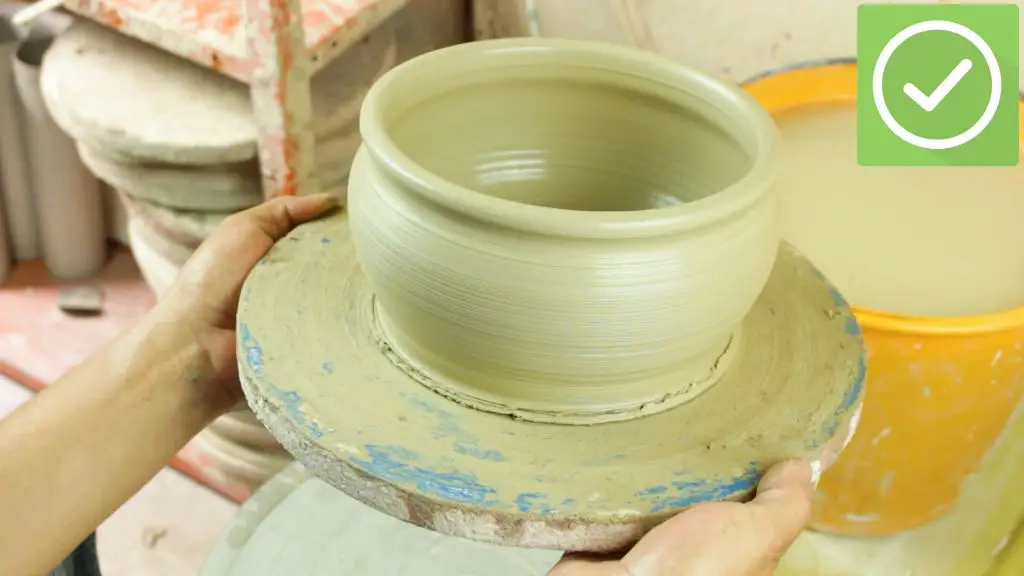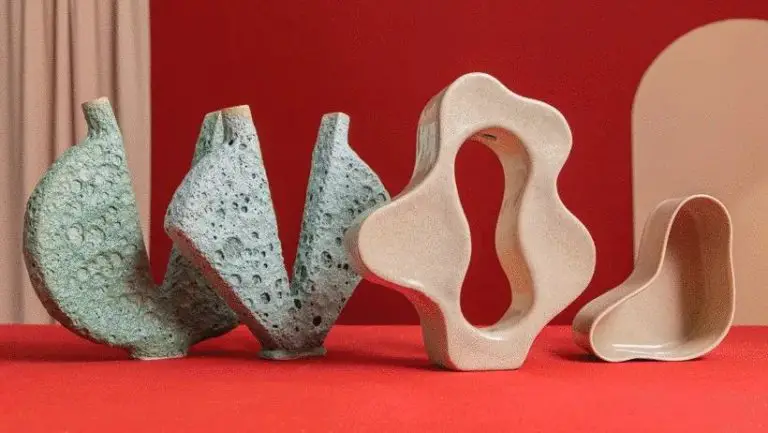What Techniques Were Used On Southwest Indian Pottery?
For centuries, the indigenous peoples of the American Southwest have created distinctive and beautifully crafted pottery. Emerging around AD 300, Southwest Indian pottery became an important artistic tradition practiced by tribes like the Anasazi, Hohokam, Mogollon, and the Pueblos of New Mexico.
The unique styles and techniques of Southwest Indian pottery developed in response to the arid climate and local resources of the region. As tribes migrated and traded, pottery styles evolved through the sharing of methods and designs. The shapes, colors, and painted patterns came to represent the identity and customs of each tribe.
Southwest Indian pottery served not only utilitarian needs but also cultural, ceremonial, and artistic purposes. Vessels played a role in cooking, storage, and trade. But pottery also expressed tribal heritage, conveyed spiritual meaning, and memorialized celebrations through symbolic imagery. Even after European contact, pottery retained its significance as a reflection of tribal traditions.
Today, Southwest Indian pottery stands as one of the most highly regarded and collected Native American art forms. Both ancient and contemporary pieces provide insight into the technologies, materials, and designs unique to the Southwest peoples. The continued practice of traditional pottery methods keeps this art form a vibrant and meaningful part of Southwestern Native American identity.
Coiling Technique
One of the oldest and most common techniques for making Southwest Indian pottery is the coiling method. This involves rolling ropes or coils of clay and stacking them on top of each other to build up the walls of the pot (The History of Coil Pottery in the Southwest United States). As each new coil is added, it is pressed together and bonded to the coils beneath it. The coils can be stacked vertically or in a spiral pattern.

Coiling has been used for thousands of years by Native American potters in the Southwest. Evidence of coiled pots dates back over 2,000 years (Storytelling · Southwest Native American Pottery). The clay coils provide strength and structure to handbuilt pottery forms. Skilled potters can build very thin-walled vessels using the coiling technique. The clay maintains its plasticity during the coiling process so pots can be shaped as desired.
Pinch Pottery
One of the earliest and most basic techniques for making Southwest Indian pottery is pinch pottery. This is an exceptionally simple hand-modeling method that involves starting with a ball of clay and literally “pinching” the sides to shape the vessel. The potter takes a lump of clay and pushes their thumb into the center while pinching the walls between their fingers, slowly rotating the clay to form a basic pot shape.
Pinch pots were likely the first type of vessels made in the Southwest, dating back thousands of years. They are almost always rounded in shape, although talented pinch potters can create more unusual forms. The walls of pinch pots tend to be relatively thick and uneven compared to other techniques. Decorations are usually minimal except for some basic incising.
While pinch pottery is very basic, it connects modern Southwestern potters to ancient traditions. Many still use this technique to create simple bowls, cups, and other vessels. It requires no tools except one’s hands, allowing potters to shape clay through touch as their ancestors did centuries ago.
Molding
Molds were commonly used to shape Southwest Native American pottery. According to What Is a Puki and How Is It Used to Make Pottery?, potters would press slabs of clay into half of a mold to form the interior shape of vessels like bowls, jars, and pitchers. The clay would be smoothed to fill the mold completely. Once the clay dried and hardened enough to maintain its shape, it could be removed from the mold and joined with more clay coils to complete the exterior of the piece.
Using molds allowed Southwestern potters to create more uniform and symmetrical shapes. Simple molds were carved out of stone or wood, but some civilizations created more elaborate molds. The Ancestral Puebloans crafted double-sided molds that formed the interior and exterior shapes simultaneously. Molds enabled mass production of pots with consistent shapes and sizes.
Paddle and Anvil
Paddle and anvil is the oldest, and perhaps the most common, method used for forming thin-walled pottery on the ancient Southwest. With this technique, the clay is shaped using a smooth soft stone or wooden paddle against a stone anvil. The potter begins with a lump or coil of clay and pounds it from the inside with the paddle while supporting the outside with the anvil. This thins and smooths the clay while giving shape to the emerging vessel.
Different paddles can be used to create various textures and designs on the outside of the pottery. The paddle technique allows for symmetric even walls and a smooth interior, which was important for utility wares like cooking pots and storage jars. Paddle and anvil formed some of the most iconic pottery of ancient cultures like the Ancestral Puebloans, Mogollon, and Hohokam.
Painting
Native American potters used natural pigments and dyes to decorate their pottery. Common colors included black, white, red, yellow, and brown. Black paint was made by mixing iron oxide or manganese with clay slip. White paint was made from kaolin clay or limestone. Red paint came from iron oxide, while yellow and orange paints used ocher pigments. Brown paint was produced by mixing iron oxide with manganese. Blue was rarely used since natural blue pigments were difficult to obtain in the Southwest.
Plant and mineral sources provided dyes for the paints. The cochineal insect produced a brilliant red color. Clays containing iron produced red, yellow, brown, and blackish tones. Juniper ash created grayish blue hues. Sumac, beeweed, and prickly pear cacti provided shades of purple, red, and orange.
Firing
Firing is an essential step in producing Southwest Indian pottery. Traditional techniques involved open firing or pit firing without the use of a kiln. Pots would be placed in a fire pit dug into the ground and covered with fuel such as wood, leaves, and dung. The fire would burn for hours to complete the firing process. Temperatures could reach over 1000°F, causing the clay to vitrify and harden. Timing the length of the firing was crucial to avoid under-firing or over-firing the vessels. This firing method resulted in irregular colors and textures on the pottery, with designs appearing smudged.
In the late 1800s, some Pueblo artists began using kilns for firing their pottery. Kilns allowed for more control over temperatures and oxygen flow, creating more uniform results. While open firing is still practiced, many Southwest Indian potteries today use electric, gas, or wood-fired kilns. Kiln firing produces brighter, more precise painted designs. However, many value the organic appearance of open-fired pottery.
Some key firing techniques included:
- Open firing
- Pit firing
- Kiln firing
Overall, firing methods significantly impacted the final look, durability, and value of Southwest Indian pottery. Mastering the firing process took great skill, planning, and care.
Source: https://ancientpottery.how/how-pueblo-pottery-is-made/
Modern Innovations
Over time, Southwestern Indigenous potters have embraced select modern tools and materials to evolve their craft and artistry. Many still dig their own clay and use natural pigments, perpetuating traditional practices. However, many also employ modern conveniences that improve efficiency or provide creative latitude without sacrificing cultural integrity.
Modern potters may use electric or kick wheels to aid in shaping and thinning vessel walls with uniform precision. Specialty metal tools lend finer detail for carving and etching patterns. Synthetic glazes and commercial paints offer a broader, consistent palette of colors, sheens, and effects. Kilns allow firing at precise temperatures to control the finished appearance and durability.
Yet the invaluable knowledge passed down across generations remains integral. Ancestral forming techniques bring handcrafted imperfection. Natural clays and pigments connect the work to the earth. Firing methods enhance, but do not replace, traditional pit firing. The materials have progressed, but the spirit endures. Blending modern conveniences with enduring cultural wisdom allows Southwestern pottery to progress yet retain its identity and purpose.
Regional Styles
Different Southwest tribes and pueblos developed distinctive styles and techniques for their pottery based on the local clay, tools, and traditions. Some examples include:
Hopi pottery from Arizona tends to have very thin walls, and uses highly polished red and orange slip. Common motifs include birds, feathers and kachina figures.
Zuni pottery from New Mexico has very precise designs, and they pioneered the use of stone polishing tools to create their signature high-gloss finishes.
Santa Clara pottery from New Mexico is known for its elegant black-on-red florals and geometrics. The black is derived from bee plant resin.
Acoma pottery from New Mexico features minimal yet expressive symbols like spiders, kivas, parrots, and rain in white on a black background.
San Ildefonso pottery from New Mexico is recognized by its black geometric patterns on a red background. Their thin-walled pottery allows light to shine through the clay.
While sharing some broader techniques, each pueblo and tribe customized their style over hundreds of years to reflect their specific culture and surroundings.
Legacy and Significance
Pottery holds deep cultural importance for Southwest Native American tribes. It serves as a means of passing down artistic traditions and designs unique to each tribe. Motifs and symbols painted on pots often have spiritual meaning and relate to native stories and beliefs. Some tribes associate different colors and patterns with the four cardinal directions, while others use certain designs to represent figures or events in their oral histories. Pueblo tribes in particular view pottery making as a sacred art form gifted to them by the spirits. They take great pride in their pottery’s quality and innovation while also respecting ancestral methods.
Beyond its cultural role, Southwest pottery also provided utilitarian value to native communities. Pots and vessels were essential for cooking, storing food and water, and carrying items. Their durability and thermal properties made them ideal for these functions in the Southwest climate. Even after European contact introduced metals and new containers, native pottery persisted in daily life. Today, many Southwest tribes retain pottery making as an important tradition. Works by native artisans sell for premium prices and have an international collector market. Modern pueblo and Navajo artists carry their culture forward by innovating new styles and techniques rooted in age-old customs.
Source: https://www.shopgarlands.com/blogs/news/the-history-and-significance-of-southwestern-native-american-pottery



